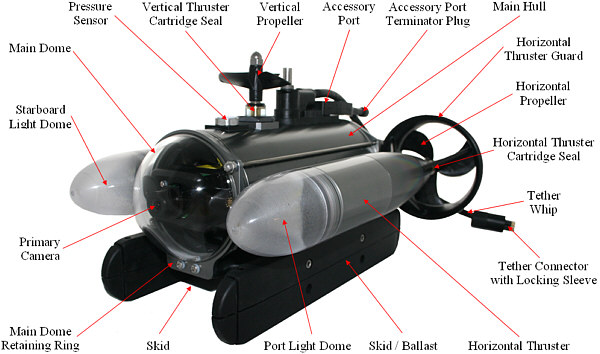ROV stands for remotely operated vehicle, and they are almost always used to explore underwater spaces that humans cannot easily access. This can be shipwrecks, sea caves, or the ocean floor. ROVs can relay back images and collect samples, all while being operated from the surface.
The average ROV has three main parts: the underwater vehicle, the control console, and the tether that connects the two. The vehicle is a lightweight frame often holding a video camera and/or a robotic arm to collect data, as well as the motors and propellers that allow movement. ROVs are usually capable of moving in 3 to 6 directions (forward/back, up/down, left/right, rotating left/right, rolling left/right, and pitching forward/back) depending on the number of motor/propeller pairs
. 
One famous ROV is Argo, a vehicle that uses television cameras and sonar to search the bottom of the ocean. This was the ROV that discovery of the Bismark, a World War II Battleship, as well as assisting in finding the Titanic. It can run for 24 hours at a time, acquiring video images of the ocean floor from fifty to one hundred feet above. Created at Woods Hole Oceanographic Institution, it was specially designed to detect and operate on the sea floor’s rugged terrain. 
Another well-known ROV is Jason Junior, otherwise known as jj, was built by people at WHOI Deep Submergence Laboratory to act as a prototype for other bigger and better ROVs. It is pretty much a smaller extension that attaches to other ROVs (such as Argo) that can fit into smaller places. It was used to further explore the cracks and crevices of the titanic.
Sources!
In case anyone has any questions! :)
ReplyDelete